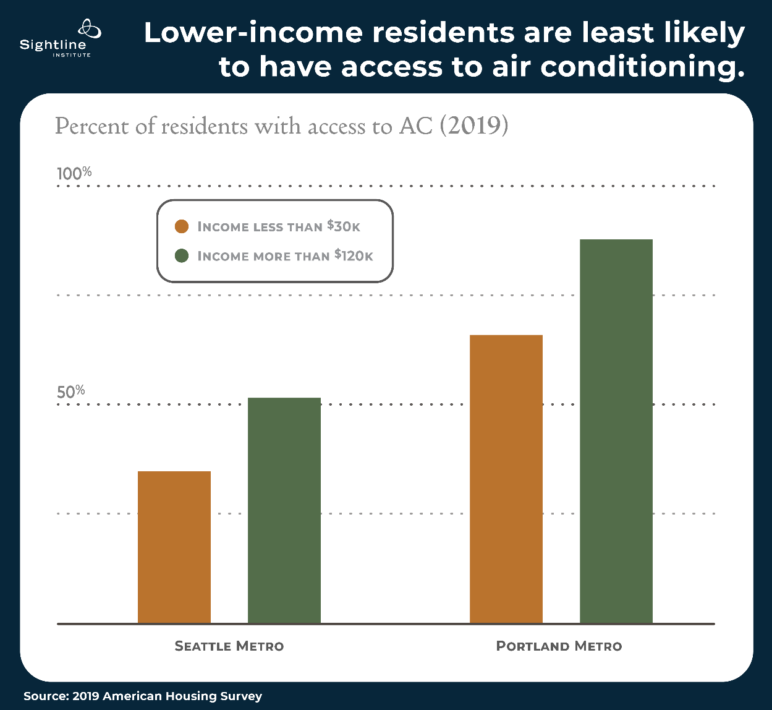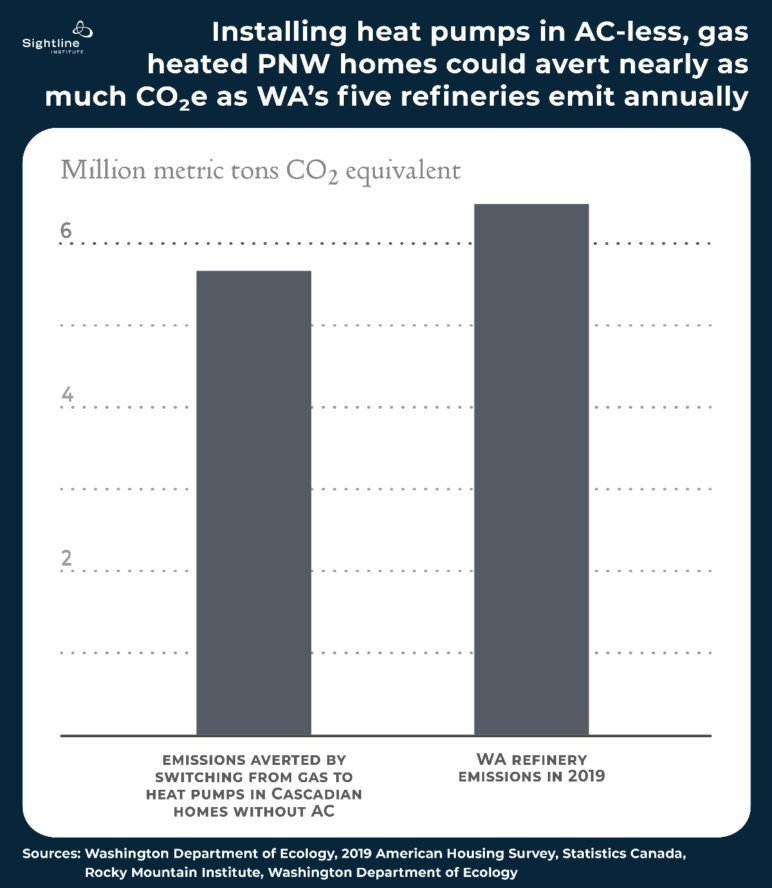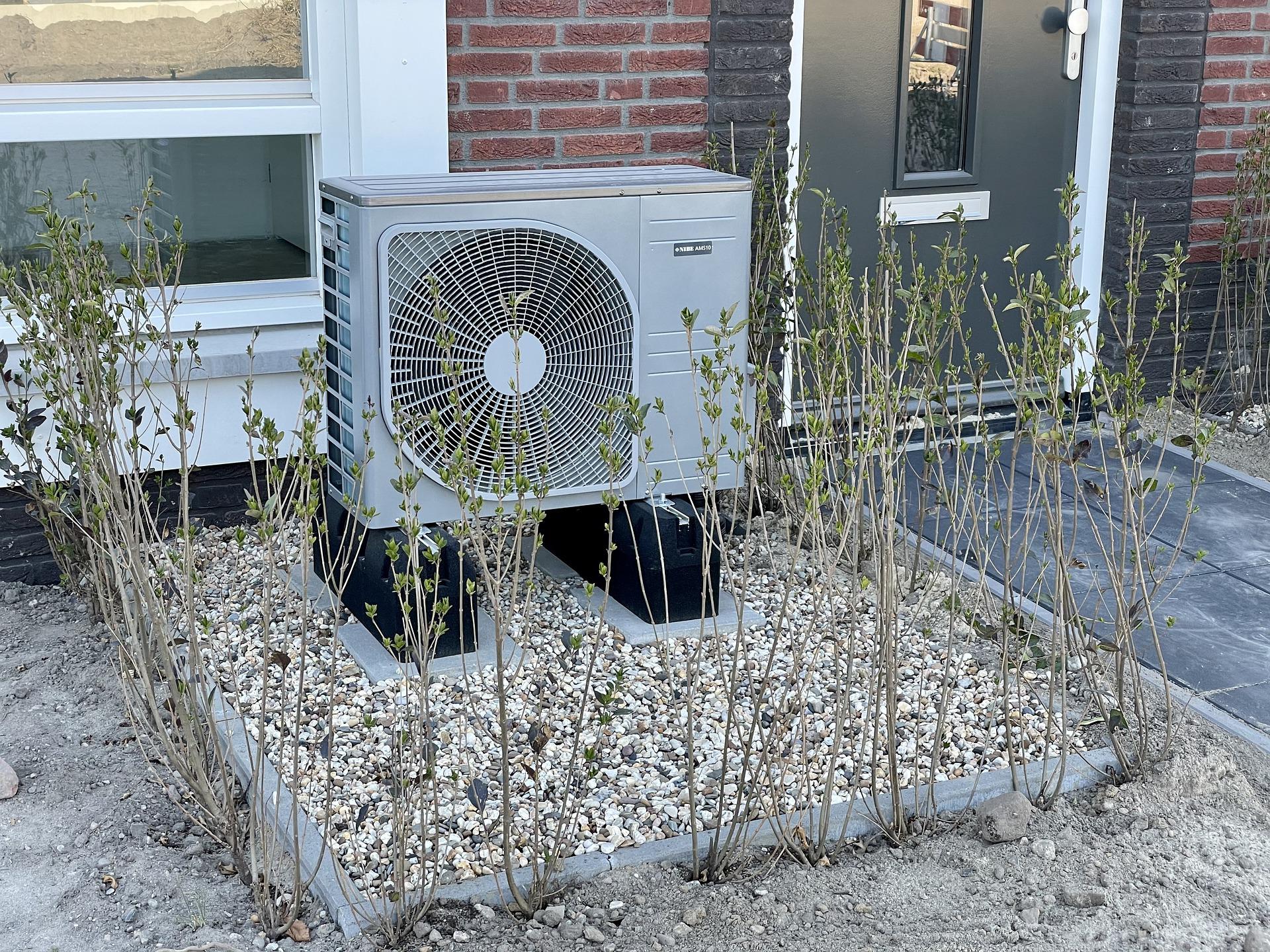Find audio versions of Sightline articles on any of your favorite podcast platforms, including Spotify, Google, and Apple.
In June 2021, Cascadia weathered a scorching string of hundred-plus-degree days. Nearly 800 people died heat-related deaths across British Columbia, Oregon, and Washington combined. The town of Lytton, BC, burned to the ground after the temperature climbed to a record-shattering 121 degrees; streetcar cables in Portland melted; and roads in Washington cracked under the intense heat. Climate scientists found that a heat wave of such intensity would have been “virtually impossible without human-caused climate change.”
While extreme heat events like 2021’s “heat dome” are unlikely to occur annually, Cascadia’s mild climate is rapidly becoming a relic. Researchers estimate the Pacific Northwest will experience a 2021-level heat wave every five to ten years at two degrees Celsius warming, which could come as early as the 2040s, posing health and safety hazards to residents in a region with below-average levels of air conditioning. In the immediate term, making public cooling centers widely available is one way to mitigate, though not eliminate, the human cost of the next heat wave. But as more residents seek out in-home cooling solutions, electric heat pumps offer an effective solution with an added benefit: helping accelerate the region’s transition away from fossil fuels by replacing gas furnaces.
Climate change means Cascadians need cooling
Because of Cascadia’s historically mild climate, the region claims some of the lowest levels of air conditioning in North America. Among the 15 largest metro areas in the United States, Seattle ranks last in percentage of households with air conditioning; just under half of households have AC. In the Portland metro area, which has historically hotter summers than Seattle, about three-quarters of households have it. And in British Columbia, about 40 percent of households do. These rates are all lower than national averages: 91 percent of households across the United States and 61 percent of households in Canada are equipped with cooling.
Access to cooling is unequally distributed, too, with low-income households the least likely to have it. In Seattle, the highest-income households are 17 percentage points more likely to have AC than the lowest-income households, as shown by the graph at left. The difference is 22 percentage points in the Portland metro area, as shown by the graph at right. These disparities played out across Cascadia in the 2021 heat dome, including in Multnomah County, Oregon (home to the city of Portland), where 61 percent of confirmed deaths occurred in zip codes with above-average poverty rates. In response, the Portland Housing Bureau is now requiring air conditioning in future affordable housing developments.

Heat pumps both heat and cool, while speeding decarbonization
Heat pumps warm buildings by transferring outdoor air to indoor spaces via liquid refrigerant; they cool buildings by reversing the flow of the refrigerant. When used for cooling, heat pumps are just as effective as other air conditioning units with similar efficiency ratings. Heat pumps are also twice as efficient as electric resistance heaters. Because they can both heat and cool buildings, they can replace gas-powered furnaces. They therefore offer decarbonization benefits that other air conditioning solutions do not.
In 2019, some 38 percent of homes in the Seattle metro area used gas for heating, as did 46 percent of homes in the Portland metro area. Half of homes in British Columbia are heated with natural gas. If all gas-heated homes in Cascadia that do not currently have air conditioning could replace their furnaces with heat pumps, rather than simply installing AC units and keeping their heating source as-is, the region could avert more than 5 million metric tons of CO2 emissions annually, as shown at left below.1 This is nearly as much as the combined annual emissions of Washington’s five oil refineries, shown at right below.

Heat pump adoption is accelerating, but cost and policy remain barriers
Policy is shifting to make heat pumps more widespread. The Washington State Building Code Council recently passed the strongest energy code in the United States, requiring high-efficiency electric heat pumps in most new commercial and large multi-family buildings. The same requirement may soon go into effect for most new residential homes in the state. At the US federal level, President Biden issued an executive order in June that creates a guaranteed market for heat pump manufacturers in an effort to boost supply.
While a step in the right direction, these policies are not sufficient to ensure equal access to cooling when the next heat wave comes. Heat pumps remain prohibitively expensive for many. The average cost of heat pump installation is around $6,000 in the United States and roughly the same in Canada, though it can reach up to $35,000, depending on the type of heat pump, size of the house, and amount of labor required. Window AC units cool a smaller area but are far cheaper, costing about $500. Without policy interventions such as rebates to equalize access to heat pumps, there is a risk that only higher-income residents will be able to afford them. This would contribute to the so-called “utility death spiral,” in which fewer and fewer customers—mostly low-income residents and renters—remain hooked up to the gas infrastructure and must shoulder an increasing share of its costs, worsening inequities.
BC residents can apply for a rebate of up to Can$11,000 of the cost of converting their gas-powered heating systems to electric, and the Oregon legislature recently passed a $27 million Heat Pump Incentive Program, which includes grants and rebates for heat pump installation. Still, Oregon and Washington both lack sufficient incentives for consumers to switch from gas to electric. The Energy Trust of Oregon’s Fuel Switching Policy prohibits incentivizing customers to switch from gas to electric heating, and a bill in Washington that would have allowed public utilities to incentivize fuel switching died in the 2022 legislative session. Climate activists in Washington and Oregon have their sights set on the 2023 legislative session to again try to equalize access to clean cooling solutions.
Bracing—and building—for a new Cascadian climate
The unprecedented 2021 heat wave showed that cooling solutions are becoming a necessity, not a luxury, to live in a warming Cascadia. Heat pumps are an effective, energy-efficient cooling solution, but they remain out of reach for many, especially lower-income residents in Oregon and Washington. If policymakers are serious about both preventing future heat domes and adapting to the consequences of a warming climate, they would be smart to dramatically scale up heat pump access across the region.



Comments are closed.